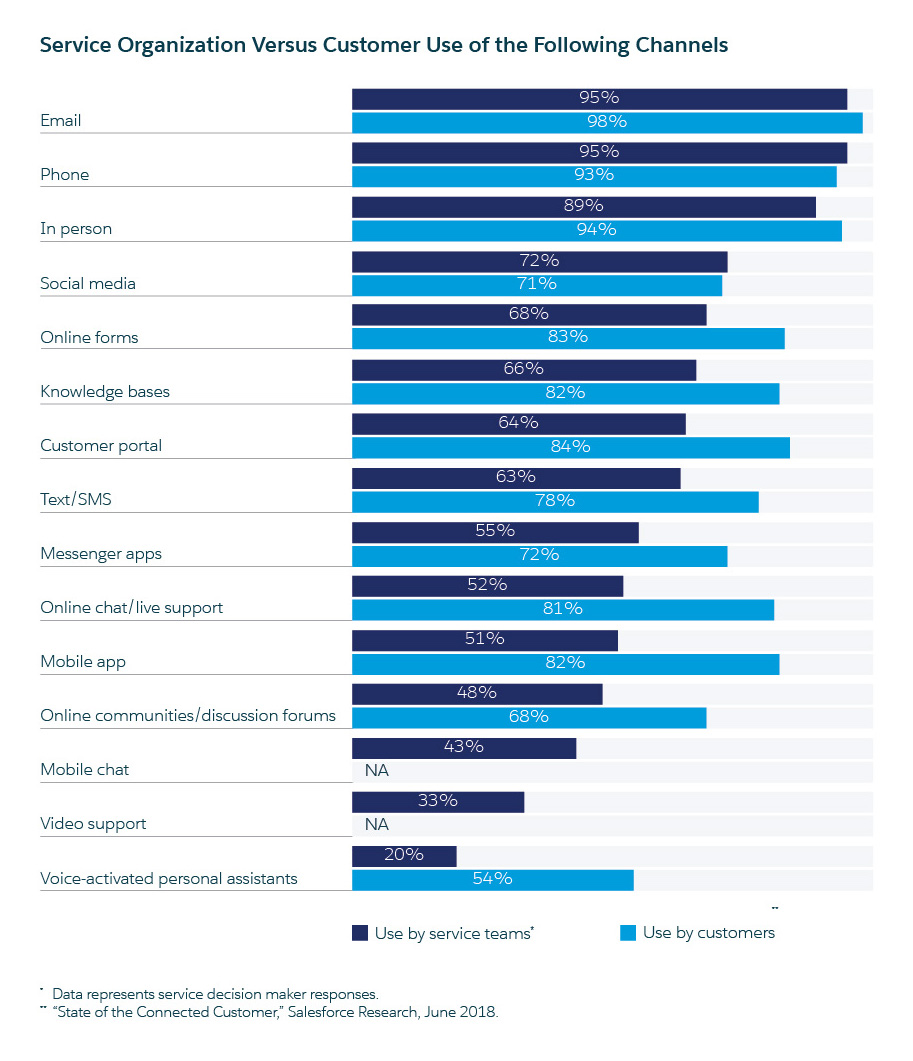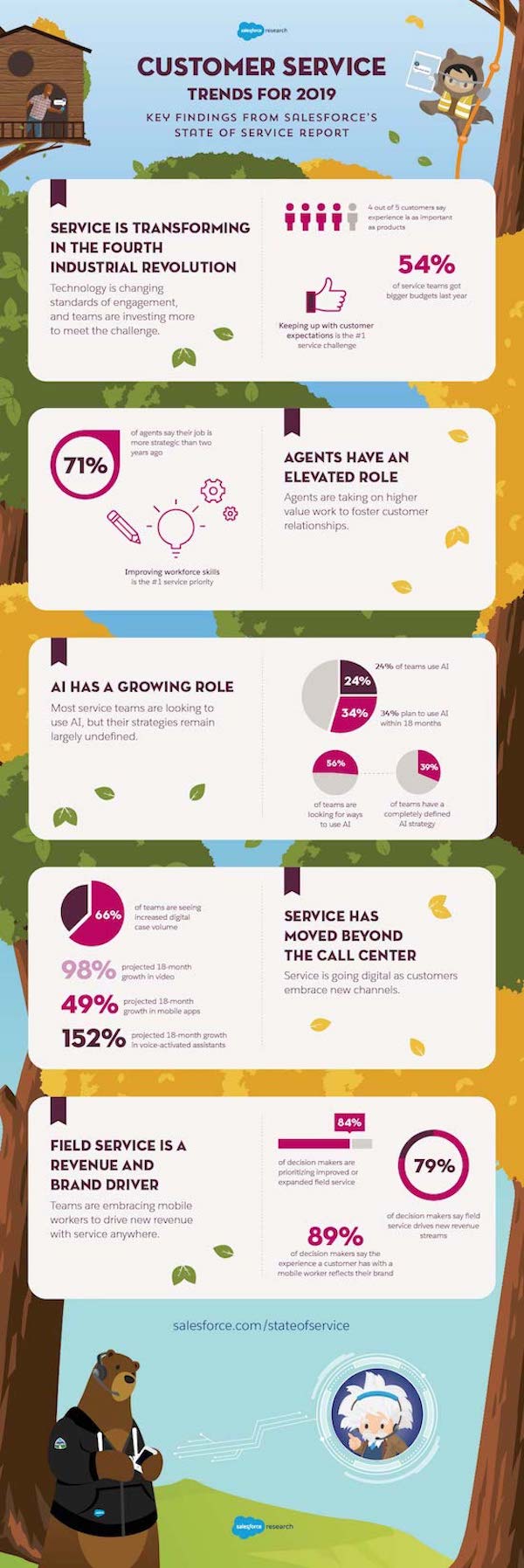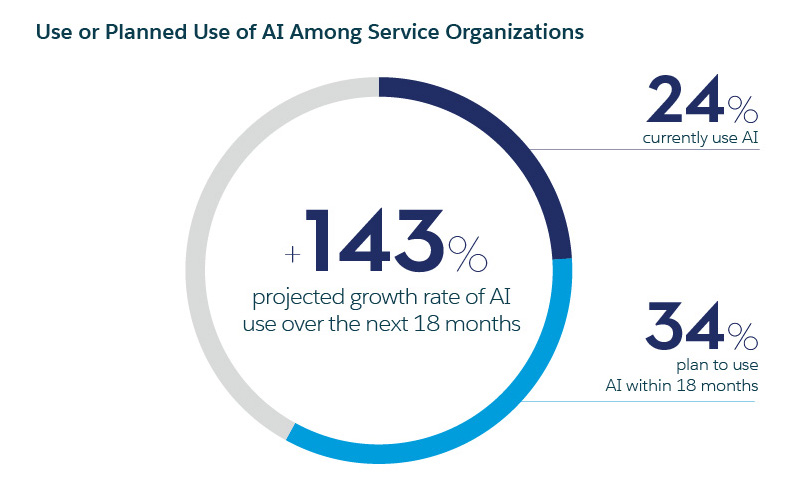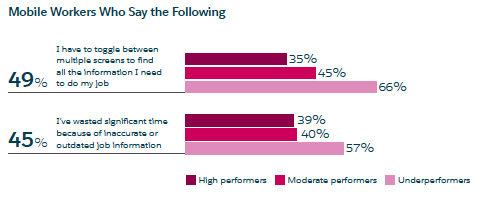Great products are powerful building blocks for any successful business. But these days, even the best products can’t satisfy customers on their own. The Fourth Industrial Revolution has redefined customers’ expectations to the point that 80% of them now consider their experience with a company to be as important as its products. The implications on the world of customer service is unprecedented.
We've recently launched a new research report that shows just how trends in customer service are evolving in this hypercompetitive customer landscape. The State of Service report provides in-depth analysis of a survey of over 3,500 customer service decision makers and agents worldwide, and signals a new reality for the role across every industry, along with practices that are separating leading organisations from the rest.
Here are the five customer service trends that stood out to me:
Service organisations are investing in transformation
Agents have more strategic duties in the Fourth Industrial Revolution
AI is empowering agents to take on their elevated roles
Service teams are playing catch-up with digital-first customers
The mobile workforce has become the face of brands
Let’s dive into these one-by-one:
1. Service organisations are investing in transformation
The marquee customer service trend is a sense of urgency among service leaders to overhaul their operations. Four out of five service decision makers believe that emerging technology is transforming customers’ expectations of them. In the UK 81% think their company’s customer service must transform to stay competitive.

This message is reaching the c-suite, which is increasingly eager to invest in modernised service. For decades, customer service budgets have been victims of an old view of the function that minimised its business value. Fast forward to today, and over half (54%) of service organisations have year-over-year budget increases, and nearly two-thirds (63%) expect more money next year.
While the recognised need for service transformation is relatively consistent across organisations, high-performing teams – those with excellent customer satisfaction rates – are far and away more likely than their underperforming competition to be getting more resources.
2. Agents have more strategic duties in the Fourth Industrial Revolution
The second customer service trend that struck me is the changing roles of agents. Customer expectations for tailored engagement based on their unique needs means that no customer-facing role – including agents – can operate under business as usual. Today, it’s not sufficient for agents to focus on closing as many cases in as little time as possible. Instead, they tackle each customer interaction on a personalised basis and treat it in the unique manner the customer demands.
Agents are keenly aware of this new dynamic, with 71% viewing their jobs as more strategic than just two years ago. Service management is laser focused on helping agents gain the skills needed to provide this elevated service, with improved workforce skills topping out as their No.1 priority.
Yet just like when it comes to service investment and budgets, not all organisations are as advanced as others. Among high-performing teams, 63% of agents spend most of their time solving complex problems. On underperforming teams, however, a similar share of agents (57%) spend most of their time on mundane tasks. It’s no wonder that agents on high-performing teams are twice as likely to see a clear path for their career growth.
3. AI is empowering agents to take on their elevated roles
Use of artificial intelligence (AI) in customer service may be nascent, with just under one-quarter (24%) of teams using it today. But 56% of service decision makers say their organisations are actively looking for ways to use AI, which signals a third customer service trend: a growing role for use cases such as chatbots, text and voice analytics, and more. In fact, AI adoption is forecasted to surge by 143% over the next 18 months.
The role of AI in customer service is still coming into focus, with just 39% of organisations having a completely defined strategy for the technology. Early impacts, however, signal alignment with the elevated role of agents; improved prioritisation of agents’ work is cited as the No.1 benefit by service organisations with AI. In fact, 71% of agents view AI as helpful to their jobs.
4. Service teams are playing catch-up with digital-first customers
With a smartphone in every pocket, calling today’s customers “connected” is an understatement. The average customer uses a whopping 10 different channels to communicate with companies, and expects a consistent, contextualised experience across all of them. Hence the fourth customer service trend that stood out to me: a shift towards digital touchpoints. While phone and email have universal adoption by customers and service organisations alike, customers are ahead of the curve when it comes to other channels.

Planned implementation of digital service channels like online communities, mobile apps, and mobile messaging platforms like WhatsApp and Facebook Messenger is high, but service teams are still largely behind the curve. Today’s customers are, on average, 16 percentage points more likely to use a given channel to communicate with companies than a company is to offer service on that channel. That means there’s a huge gap between what the customer wants and what organisations are delivering.
The gap is particularly wide when it comes to emerging service channels. Take voice-activated personal assistants like Siri and Alexa, for example, which has a 34 percentage point gap between customer and service team adoption, or mobile apps with a 31 percentage point gap. These insights helped me understand why only 48% of agents feel equipped to engage with customers on any channel they choose.
5. The mobile workforce has become the face of brands
The fifth customer service trend that surfaced is that service hasn’t just gone digital, it’s also moved outside the confines of the office. Today, field service is a big initiative for service leaders across industries as they seek to bring customer experiences to a new level. But beyond making customers happy, field service is having a big impact on the top line. 80% of service leaders say field service drives significant revenue, and 79% say it drives new revenue streams.
Nearly 9 in 10 (89%) service decision-makers say the experience a customer has with a mobile worker is a reflection of their brand, and so 71% claim to be making significant investments in their mobile workforce – be it through technology, hiring, or otherwise. Yet much like the overall agent experience, the mobile worker experience is inconsistent across company performance tiers, with nearly double as many mobile workers at underperforming organisations saying they have to toggle between multiple screens to get the information they need than those at high-performing organisations.
Download the full report
I invite you to read the full report to uncover all the insights on trends in customer service and what companies can do to make their experiences as great as their products. For highlights, check out the infographic below.
Customer Service Trends for 2019 Infographic











